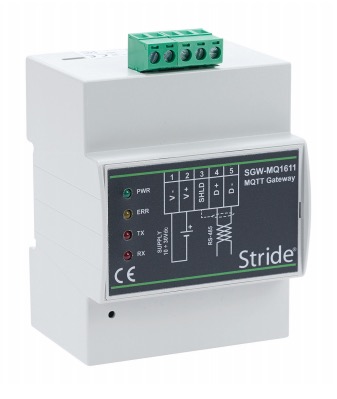Recent Posts
IIoT Gateway Connects Modbus Devices To Cloud-Based Data Logging Solutions
Posted by on
The STRIDE MQTT gateway by AutomationDirect connects industrial Modbus devices to an MQTT (Message Queuing Telemetry Transport) cloud-based data logging system. MQTT is a machine-to-machine IIoT (Industrial Internet of Things) connectivity protocol that renders low power usage, data packets, and distribution of information to single or multiple receivers.
The STRIDE MQTT gateway implements a hardware setup to add Modbus RTU/TCP devices to an MQTT cloud data collection platform. The MQTT gateway connects to up to 32 Modbus devices; wired and wireless (Wi-Fi) gateway designs are available.
While the STRIDE MQTT Gateway represents the hardware component of a cloud-based data logging solution, the user must own an actual cloud computing service account from a cloud services provider.
Gateway Features
- Convert Modbus RTU/TCP to MQTT
- IIoT MQTT protocol with SSL/TLS
- Configurable via web page
- Hardware watchdog function
- Full electrical isolation
- MQTT cloud compatible with AWS, Mosquitto and more
- Wired or Wi-Fi models available
- CE and FCC agency approvals
Hands-On Industrial Internet of Things
We live in an age where high-level automation is used to produce reliable conclusions. To set up an automation environment, you need first to configure a network that can be accessed anywhere and by any device. This book is a useful guide that assists you to discover the technologies and use-cases for Industrial Internet of Things (IIOT).
Hands-On Industrial Internet of Things guides you through the implementation of industrial processes and specific control devices and protocols. You examine the process of identifying and connecting to various industrial data sources collected from various sensors. Furthermore, you connect these sensors to cloud networks, such as AWS IoT, Azure IoT, Google IoT, and OEM IoT platforms, and obtain data from the cloud to your devices.
As you progress through the chapters, you gain hands-on experience in using open source Node-Red, Kafka, Cassandra, and Python. You will also learn how to develop streaming and batch-based Machine Learning algorithms.
 Loading... Please wait...
Loading... Please wait...


